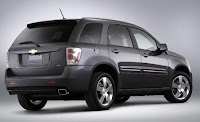2009 Mercedes-Benz SL550, SL600, and SL63 AMG - Auto Shows
The Mercedes-Benz for the rich and famous gets a major overhaul.
The cult of youth pervades western civilization. People like to appear youthful, and that's exactly why such cars as the luxurious Mercedes SL keep getting sportier, even though their buyer demographics might suggest a bit more gravitas. Who doesn't want to be good-looking, sporty, and carefree?
The 2009 SL, the second face lift of the current-generation SL (code-named R230 and launched in 2001), will be shown at the Geneva auto show in early March. Just two years ago, the SL's chassis characteristics, steering, and engines were sharpened. But this overhaul is far more extensive, enough so that Mercedes refers to it as a new SL.
What's New?
The look is definitely more contemporary, with the peanut-shaped headlights gone in favor of a more aggressive look that invokes the contemporary CLS four-door. The nose is more pointed; the grille is wider; and new side air outlets, wheel designs (at least 18 inches on all models), and LED taillights up the visual presence on the street. We're not sure how they do it, but the AMG package makes the car look even more menacing.
There are retro touches, too, such as the "power domes" on the hood. The grille design has come full circle; the single-bar grille, last seen in 1989 on the R107 SL, is back. The SL600 gets extra dressing with numerous V-12 emblems inside and out, different interior door panels, special wheels, and specific exhaust tips.
Look for some of these cues from the SL on upcoming cars. "The SL has always pioneered the styling of other Mercedes models," says Hans-Dieter Futschik, head of passenger-car design in Stuttgart.
Carry-Over Engines in the SL550, SL600; Meet the New SL63 AMG
It may look youthful, but the SL moves—and has always moved—with great authority. The 382-hp V-8 in the SL550 and the 510-hp twin-turbo V-12 in the SL600 don't get a power increase. However, the 510-hp supercharged SL55 AMG is dumped in favor of the naturally aspirated 518-hp, 6.2-liter SL63 AMG. But the big news on the AMG is the seven-speed multiclutch system called MCT. Details are thin, but this is a further development of Mercedes' seven-speed automatic that will no doubt shift more quickly and, in this case, operates without a torque converter.











